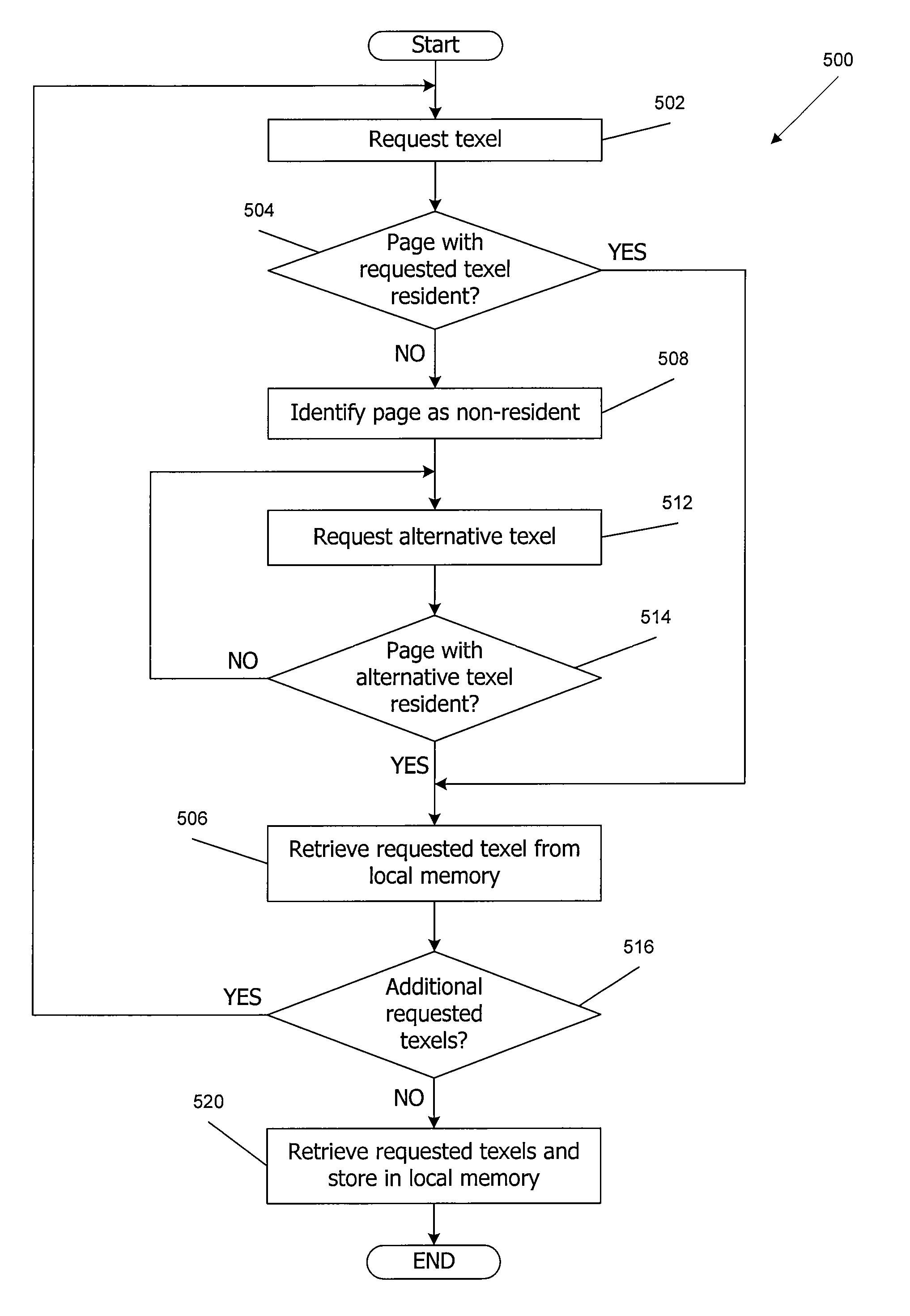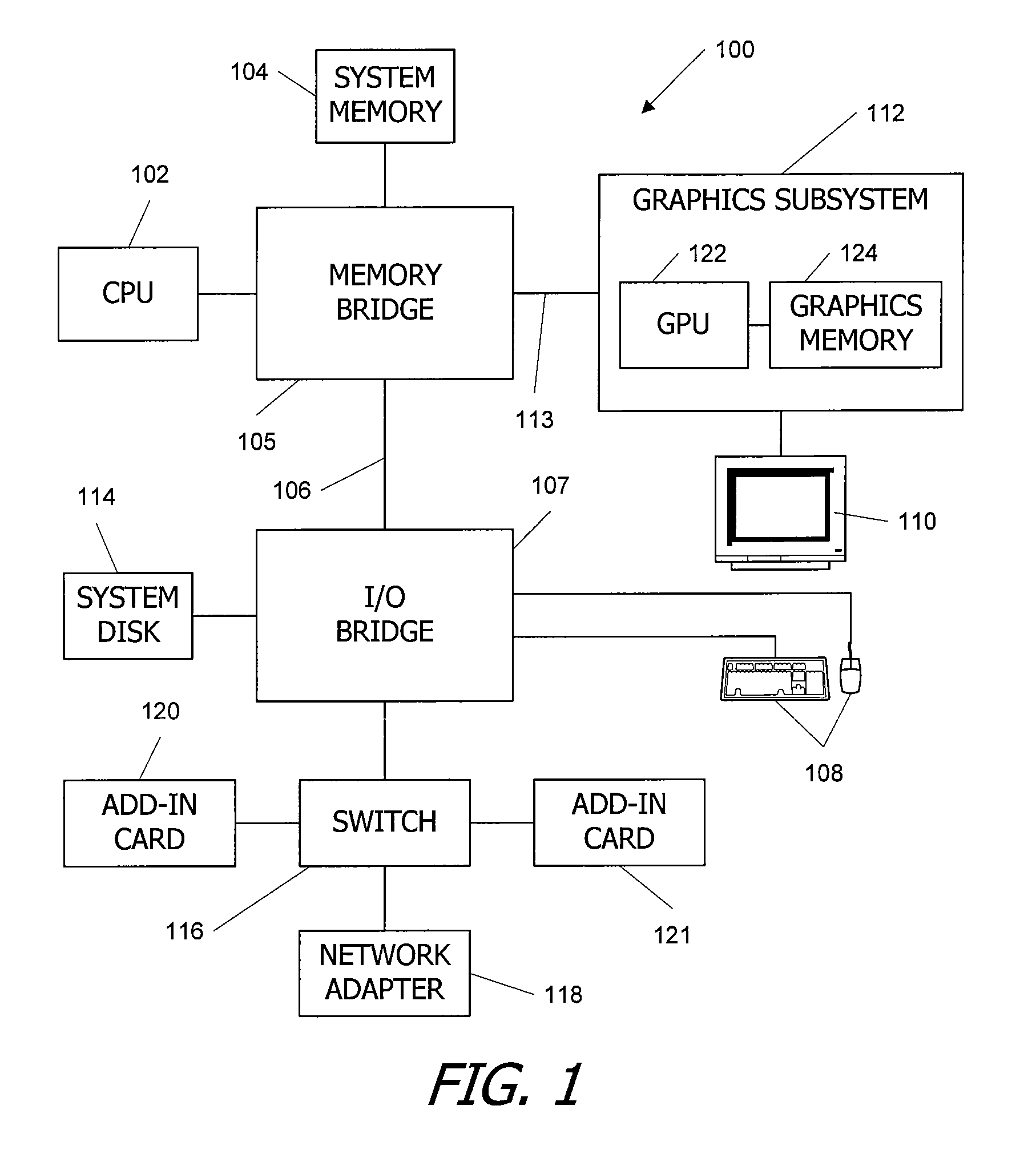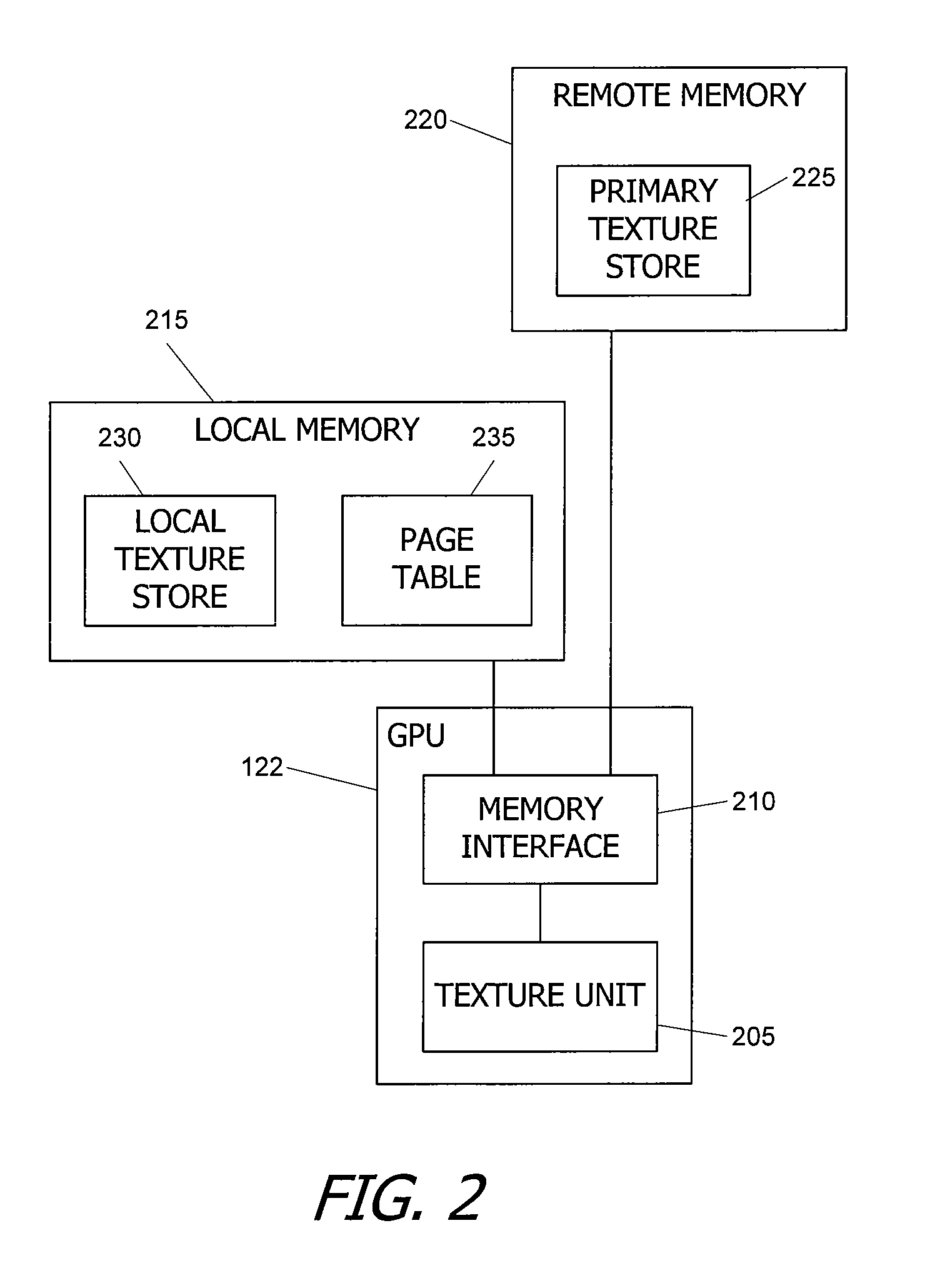Deferred page faulting in virtual memory based sparse texture representations
a texture and virtual memory technology, applied in the field of virtual memory subsystems, can solve the problems of slow rendering operation, inability to access data stored in such storage media, and often overflowing local memory with texture data,
- Summary
- Abstract
- Description
- Claims
- Application Information
AI Technical Summary
Benefits of technology
Problems solved by technology
Method used
Image
Examples
Embodiment Construction
[0018]FIG. 1 is a block diagram of a computer system 100 according to an embodiment of the present invention. Computer system 100 includes a central processing unit (CPU) 102 and a system memory 104 communicating via a bus path that includes a memory bridge 105. Memory bridge 105, which may be, e.g., a conventional Northbridge chip, is connected via a bus or other communication path 106 (e.g., a HyperTransport link) to an I / O (input / output) bridge 107. I / O bridge 107, which may be, e.g., a conventional Southbridge chip, receives user input from one or more user input devices 108 (e.g., keyboard, mouse) and forwards the input to CPU 102 via bus 106 and memory bridge 105. Visual output is provided on a pixel based display device 110 (e.g., a conventional CRT or LCD based monitor) operating under control of a graphics subsystem 112 coupled to memory bridge 105 via a bus or other communication path 113, e.g., a PCI Express (PCI-E) or Accelerated Graphics Port (AGP) link. A system disk 1...
PUM
 Login to View More
Login to View More Abstract
Description
Claims
Application Information
 Login to View More
Login to View More - R&D
- Intellectual Property
- Life Sciences
- Materials
- Tech Scout
- Unparalleled Data Quality
- Higher Quality Content
- 60% Fewer Hallucinations
Browse by: Latest US Patents, China's latest patents, Technical Efficacy Thesaurus, Application Domain, Technology Topic, Popular Technical Reports.
© 2025 PatSnap. All rights reserved.Legal|Privacy policy|Modern Slavery Act Transparency Statement|Sitemap|About US| Contact US: help@patsnap.com



